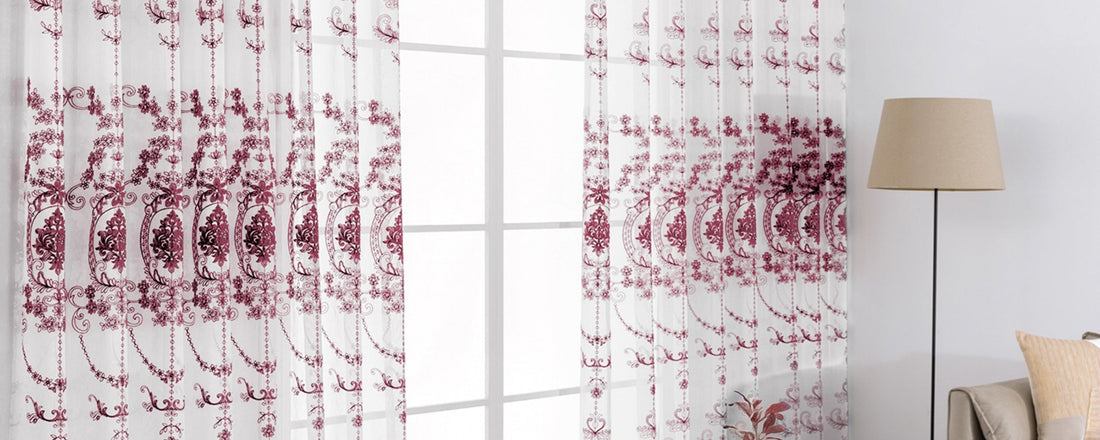
Bedroom Curtain Fabric Selection Guide
Bedroom curtain fabric
 As a private space for us to rest and relax, the bedroom is essential to create an atmosphere. As an indispensable element in the bedroom, curtains not only assume the practical functions of shading and protecting privacy but also through the choice of fabrics, they can imperceptibly affect our sleep quality and space atmosphere.The following describes six common bedroom curtain fabrics:
As a private space for us to rest and relax, the bedroom is essential to create an atmosphere. As an indispensable element in the bedroom, curtains not only assume the practical functions of shading and protecting privacy but also through the choice of fabrics, they can imperceptibly affect our sleep quality and space atmosphere.The following describes six common bedroom curtain fabrics:
1. Polyester
Polyester has durable, anti-wrinkle, and quick-drying properties, and is widely used in clothing, household and industrial fields.

| Light Blocking | ★★★★☆ |
| Breathability | ★★★☆☆ |
| Advantages | Wrinkle-resistant, durable, easy to clean, and available in a wide range of colors. Perfect for modern minimalist or Nordic-style bedrooms. |
| Disadvantages | Low-quality polyester may generate static electricity and attract dust. |
2. Velvet
Velvet fabric is a luxurious and soft fabric, known for its unique dense cut velvet and shiny surface, and is commonly used in high-end clothing and home decoration.

| Light Blocking | ★★★★★ |
| Sound Insulation | ★★★★☆ |
| Advantages | Velvet fabric is thick and soft in texture, offering excellent light-blocking and sound-insulating properties. It also adds a sense of luxury and warmth to the bedroom. |
| Disadvantages | Requires regular vacuuming to prevent dust buildup; heavy fabric may increase the load on the curtain rod. |
3. Blackout Fabric
Blackout fabric is a heavy fabric with excellent shading properties, which can effectively block light penetration. It is commonly used in curtain making to create a private and dark environment.

| Light Blocking | ★★★★★ |
| Advantages | Multi-layered composite structure provides thermal insulation, reducing air conditioning energy consumption in summer. |
| Disadvantages | Complete light blocking may make the room too dark; it is recommended to pair with sheer curtains for layered use. |
4. Cotton-Linen Blend
Cotton-Linen Blend fabric combines the softness and comfort of cotton with the breathability and durability of linen, showing a natural texture and elegant drape, suitable for spring and summer clothing and household items.

| Light Blocking | ★★★☆☆ |
| Breathability | ★★★★★ |
| Advantages | Natural materials are environmentally friendly and skin-friendly , and can create a soft light and shadow effect when transmitting light. |
| Disadvantages | It is easy to shrink and deform. It is recommended to choose an improved version with polyester blend. |
5. Silk
Silk fabric is a natural protein fiber, known for its luster, silky, light and breathable, and is commonly used in high-end clothing and luxury household items.

| Light Blocking | ★★☆☆☆ |
| Decorative Appeal | ★★★★★ |
| Advantages | Natural sheen enhances the texture of the space, with excellent draping quality. |
| Disadvantages | Delicate and difficult to maintain; requires dry cleaning and should be kept out of direct sunlight to prevent fading. |
6. Coated Fabric
Coated fabric is a specially coated fabric that has the characteristics of waterproof, antifouling, and wear resistance. It is widely used in outdoor equipment and functional clothing.

| Light Blocking | ★★★★☆ |
| Convenience | ★★★★★ |
| Advantages | Can be machine-washed directly, suitable for renters or those who frequently change their decor. |
| Disadvantages | The coating may wear off with increased washing; hand washing or using a gentle cycle is recommended. |
Curtains are the “second bed” of the bedroom. Choosing the right fabric can not only improve the quality of sleep but also double the aesthetic value of the space. Now, you might as well re-examine your bedroom curtains and let it be your gentle guardian to sleep with peace of mind!